
How many computer-generated arithmetic problems can you answer in 60 seconds?
- Material Type:
- Game
- Provider:
- U.S. Department of Energy
- Provider Set:
- Argonne National Laboratory
- Author:
- David Baurac
- Date Added:
- 09/19/2000

How many computer-generated arithmetic problems can you answer in 60 seconds?

Remember your multiplication tables? ... me neither. Brush up on your multiplication, division, and factoring skills with this exciting game. No calculators allowed! The students will be given mutiplication and division problems which they must answer. They also have the option of being given a number then stating the factors of how that number was attained using either multiplication or division.
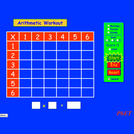
Brush up on your multiplication, division, and factoring skills with this interactive multiplication chart. Three levels and timed or untimed options are available.

This activity will help students apply their knowledge about arrays to a real-world situation. Students will design buildings and create an array of windows for eah building. Students will use the array to write an addition sentence and a multiplication equation to determine how many windows each building consist of.
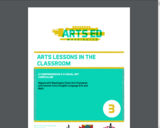
Fundamental concepts and skills are applied in new ways. Line is used to invent characters in monotype prints and show figures in action within drawings and wire sculptures. Elements of scale, horizon, overlapping, shape and texture in painting and printmaking reference specific time and place for settings. Students also visualize and write in response to art.
The K-6 lesson handbooks were originally produced for the Lake Washington School District with grants from 4culture and ArtsWA. Encourage your colleagues, other schools, and organizations to use these materials for non-commercial, educational purposes at no cost by downloading their own copy at: http://artsedwashington.org/portfolio-items/alic-2

Working as if they are engineers who work for (the hypothetical) Build-a-Toy Workshop company, students apply their imaginations and the engineering design process to design and build prototype toys with moving parts. They set up electric circuits using batteries, wire and motors. They create plans for project material expenses to meet a budget.
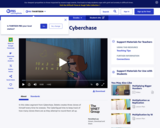
In this video segment from Cyberchase, Inez and Lucky figure out how to keep track of the number of clones as they continue to multiply.
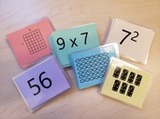
This resource was created by the Washington Office of Superintendent of Public Instruction.
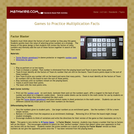
Students must think about the factors of each number as they play this game. Students quickly learn the value of selecting prime numbers as a strategy. The beauty of the game design is that students will review the factors of many numbers and mentally add the sum of these factors together in search of the "best move."
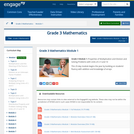
This 25-day module begins the year by building on students fluency with addition and knowledge of arrays.
Find the rest of the EngageNY Mathematics resources at https://archive.org/details/engageny-mathematics.
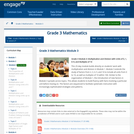
This 25-day module builds directly on students work with multiplication and division in Module 1. Module 3 extends the study of factors from 2, 3, 4, 5, and 10 to include all units from 0 to 10, as well as multiples of 10 within 100. Similar to the organization of Module 1, the introduction of new factors in Module 3 spreads across topics. This allows students to build fluency with facts involving a particular unit before moving on. The factors are sequenced to facilitate systematic instruction with increasingly sophisticated strategies and patterns.
Find the rest of the EngageNY Mathematics resources at https://archive.org/details/engageny-mathematics.
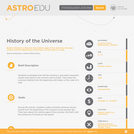
Students investigate how old the universe is and when important events took place in the universe and on Earth. They draw the universe timeline from the beginning until today on the scale of a year.

In this video segment from Cyberchase, Inez estimates whether she has enough jelly beans in her large container to decorate all of the cookies in her batch.
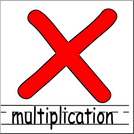
Multiplication practice for third graders.

With this video series, teach teens and pre-teens how to manage their money and foster an entrepreneurial spirit. Visit PBS Learning Media site to download a handout, discussion questions, and view alignment to additional Washington learning standards.
Permitted use from PBS Learning: Stream, Download and Share

In this math escape room lesson, students work in teams to solve a series of math puzzles and riddles to "escape" a themed room. Each puzzle is designed to reinforce key math concepts such as fractions, geometry, and basic algebra. As students solve each problem, they receive clues that lead them to the next challenge, promoting critical thinking and collaboration. The activity concludes with a debrief where students discuss the strategies they used and the math skills they applied.

(Nota: Esta es una traducción de un recurso educativo abierto creado por el Departamento de Educación del Estado de Nueva York (NYSED) como parte del proyecto "EngageNY" en 2013. Aunque el recurso real fue traducido por personas, la siguiente descripción se tradujo del inglés original usando Google Translate para ayudar a los usuarios potenciales a decidir si se adapta a sus necesidades y puede contener errores gramaticales o lingüísticos. La descripción original en inglés también se proporciona a continuación.)
Este módulo de 25 días se basa directamente en los estudiantes que trabajan con multiplicación y división en el módulo 1. El módulo 3 extiende el estudio de factores de 2, 3, 4, 5 y 10 para incluir todas las unidades de 0 a 10, así como múltiples de 10 dentro de 100. Similar a la organización del Módulo 1, la introducción de nuevos factores en el módulo 3 se extiende a través de temas. Esto permite a los estudiantes construir fluidez con hechos que involucran una unidad en particular antes de continuar. Los factores están secuenciados para facilitar la instrucción sistemática con estrategias y patrones cada vez más sofisticados.
Encuentre el resto de los recursos matemáticos de Engageny en https://archive.org/details/engageny-mathematics.
English Description:
This 25-day module builds directly on students work with multiplication and division in Module 1. Module 3 extends the study of factors from 2, 3, 4, 5, and 10 to include all units from 0 to 10, as well as multiples of 10 within 100. Similar to the organization of Module 1, the introduction of new factors in Module 3 spreads across topics. This allows students to build fluency with facts involving a particular unit before moving on. The factors are sequenced to facilitate systematic instruction with increasingly sophisticated strategies and patterns.
Find the rest of the EngageNY Mathematics resources at https://archive.org/details/engageny-mathematics.

(Nota: Esta es una traducción de un recurso educativo abierto creado por el Departamento de Educación del Estado de Nueva York (NYSED) como parte del proyecto "EngageNY" en 2013. Aunque el recurso real fue traducido por personas, la siguiente descripción se tradujo del inglés original usando Google Translate para ayudar a los usuarios potenciales a decidir si se adapta a sus necesidades y puede contener errores gramaticales o lingüísticos. La descripción original en inglés también se proporciona a continuación.)
Este módulo de 25 días comienza el año basándose en la fluidez de los estudiantes con suma y conocimiento de las matrices.
Encuentre el resto de los recursos matemáticos de Engageny en https://archive.org/details/engageny-mathematics.
English Description:
This 25-day module begins the year by building on students fluency with addition and knowledge of arrays.
Find the rest of the EngageNY Mathematics resources at https://archive.org/details/engageny-mathematics.
![OREGON MATH STANDARDS (2021): [3.OA]](https://img.oercommons.org/160x134/oercommons/media/courseware/lesson/image/13138_ODE_Math_Logo_2018-H_color_BvjqVNy.png)
The intent of clarifying statements is to provide additional guidance for educators to communicate the intent of the standard to support the future development of curricular resources and assessments aligned to the 2021 math standards. Clarifying statements can be in the form of succinct sentences or paragraphs that attend to one of four types of clarifications: (1) Student Experiences; (2) Examples; (3) Boundaries; and (4) Connection to Math Practices.

The CyberSquad must divide 35 candies evenly among seven gargoyles in this video segment from Cyberchase.